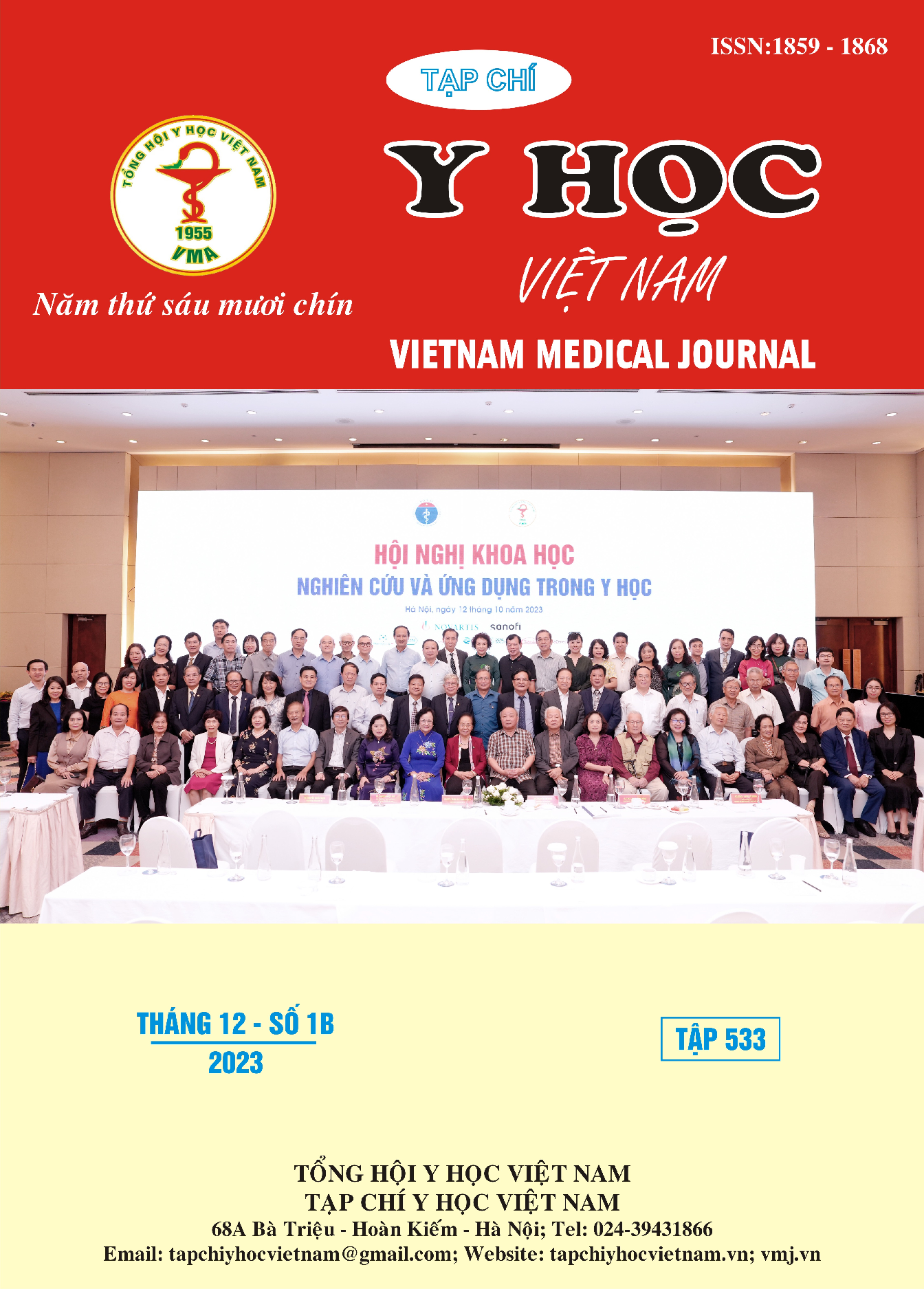CLINICAL AND SUB-CLINICAL FEATURES OF AIRWAY NARROW DUE TO EBTB
Main Article Content
Abstract
Introduction: Scarring of tracheobronchial stenosis due to tuberculosis is a serious sequela of airway tuberculosis but is often diagnosed late due to nonspecific clinical symptoms. Paraclinical tests like chest MSCT and bronchoscopy help diagnose, assess damage, and predict treatment. Subjects and methods: Retrospective and prospective cross-sectional description of 81 patients diagnosed and treated for airway narrowing due to tuberculosis at the Central Lung Hospital and Bach Mai Hospital from January 1, 2020 to June 30 /2023. Results: Average age 40.5; The ratio of women is 4 times that of men. Common clinical symptoms: cough (100%), chest pain and tightness 71.6%, difficulty breathing 50.6%, symptoms of tuberculosis infection 46.9%, wheezing 18.5%, wheezing 11%. The most common location of stenosis is left main bronchus 67.9%, right main bronchus: 21%, lobar bronchus: 40.7%, trachea: 18.5%. The commonest subtype was fibrostenotic 63%, edematous-hyperemic type 16%, actively caseating 10%, granular 6.1%, tumor and copper ulcers 2.5%, and nonspecific bronchitic 0%.
Article Details
References
2. Chung HS. Endobronchial Tuberculosis. J Korean Med Assoc. 2006;49(9): 799-805. doi: 10.5124/ jkma.2006.49.9.799
3. Lee JH, Park SS, Lee DH, Shin DH, Yang SC, Yoo BM. Endobronchial tuberculosis. Clinical and bronchoscopic features in 121 cases. Chest. 1992;102(4): 990-994. doi:10.1378/ chest.102. 4.990
4. Chung HS, Lee JH, Han SK, et al. Classification of endobronchical tuberculosis by the bronchoscopic featrures. Tuberculosis and Respiratory Diseases. 1991; 38 (2): 108-115.
5. Argun Baris S, Onyilmaz T, Basyigit I, Boyaci H. Endobronchial Tuberculosis Mimicking Asthma. Tuberc Res Treat. 2015;2015: 781842. doi:10. 1155/2015/781842
6. Jung SS, Park HS, Kim JO, Kim SY. Incidence and clinical predictors of endobronchial tuberculosis in patients with pulmonary tuberculosis. Respirology. 2015;20(3):488-495. doi:10.1111/resp.12474
7. Hoheisel G, Chan BKM, Chan CHS, Chan KS, Teschler H, Costabel U. Endobronchial tuberculosis: diagnostic features and therapeutic outcome. Respiratory Medicine. 1994;88(8):593-597. doi:10.1016/S0954-6111(05)80007-1
8. Ozkaya S, Bilgin S, Findik S, Kök HC, Yuksel C, Atıcı AG. Endobronchial tuberculosis: histopathological subsets and microbiological results. Multidiscip Respir Med. 2012;7(1):34. doi:10.1186/2049-6958-7-34


